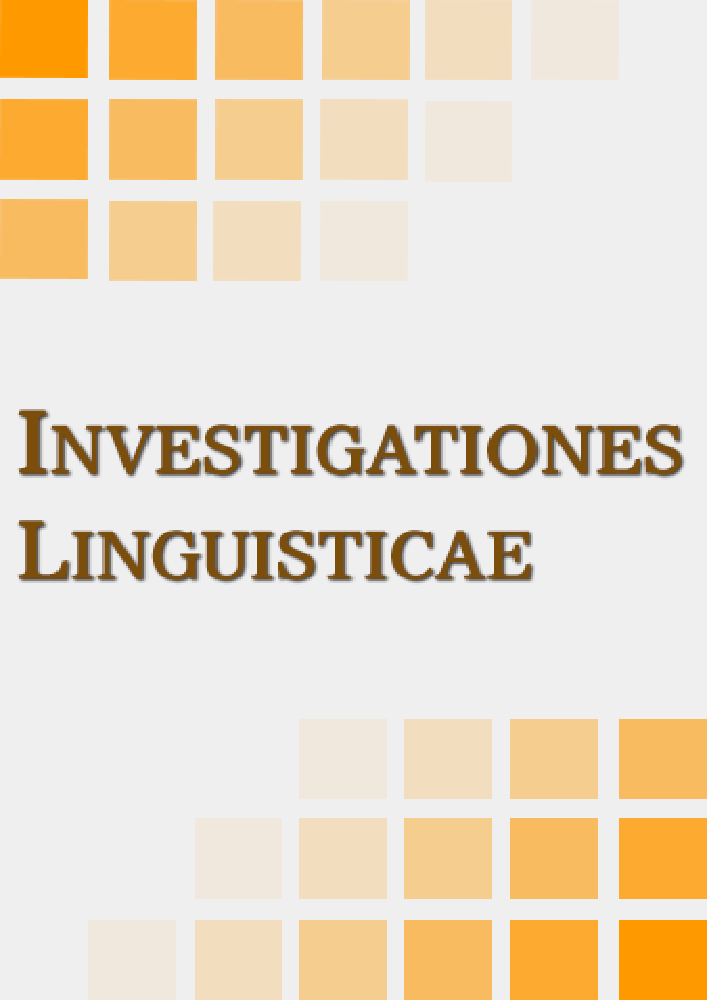Abstract
When the Modern Greek verbal system is analysed many similarities may be seen. Despite that, the system is divided into conjugations and inflectional classes that do not cover all verbs. Given that the Modern Greek verbal inflection can be characterised as regular and symmetric from the morphological point of view, the question whether it is necessary to distinguish conjugations with non-conjugational’ inflectional classes as e.g. contracted verbs arises.The objective is to review classifications of the conjugational systems of the Modern Greek verbs in the Indicative Mood of the Present and Imperfective Past Tenses and, in accordance to the morphological analysis of verbal forms, to propose a new one. The analysis concentrates on the morphology of verbal forms and on analogies between the second conjugation and the contracted verbs. The analysis is based on the morphological features of verbs. In other words, it concentrates on the distinction of a verbal stem or stems, personal endings and correlation between them. Such an approach enables one to observe similarities and differences among verbs, regardless of the conjugational class they represent. Consequently, it is possible to group verbs in accordance to the features of the stem and personal endings that are added, leading to a proposal of new classification of the Modern Greek verbal system.
References
Chatzisavvidis, S., Chatzisavvidou, A. 2009. Grammatiki tis neas ellinikis glossas. A’, B’ kai G’ Gymnasiou. Athenes: OEDB.
Fisiak, J. 1990. On the Present Status of Same Metatheoretical and Theoretical Issues in Contrastive Linguistics. w: Further insights into contrastive analysis. Amsterdam: Benjamins.
Holton, D., Mackridge, P., Philippaki-Warburton, E. 1998. Grammatiki tis Ellinikis Glossas. Athens: Ekdoseis Pataki.
Horrocks G. 2010. Greek. A History of the Language and its Speakers. Malden: Wiley-Blackwell.
Janda R.D., Joseph B. D. 1992a. Pseudo-Agglutinativeity in Modern Greek Verb-Inflection and “Elsewhere”. w: Paper from the 28th Regional Meeting of the Chicago Linguistic Society, Vol. 1. Chicago: Chicago Linguistic Society.
Joseph B.D. 1992b. I morfosíndaksi tu neoelinikú rimatikú sinólu san morfolojía ke óxi síndaksi [The Morphosyntax of the Modern Greek Verbal Unit as Morphology and not Syntax]. w: Studies in Greek Linguistics (Proceedings of the 12th Annual Meeting of the Department of Linguistics, Aristotelian University of Thessaloniki). Thessaloniki: Aristotelian University of Thessaloniki.
Joseph B. D., Smirniotopoulos J.C. 1993. The Morphosyntax of the Modern Greek Verbal Complex as Morphology and not Syntax. w: Linguistics Inquiry24.2. Cambridge: MIT Press.
Katsouda, G. 2013. Ta Rimata se -amai tis Neoellinikis Koinis. w: Major Trends in Theoretical and Applied Linguistics. London: Versita.
Klairis, Ch., Mpampiniotis G. 2005. Grammatiki tis Neas Ellinikis. Athenes: ELLINIKA GRAMMATA.
Mackridge, P. 2004. I Neoelliniki Glossa: Perigrafiki Analisi tis Neoellinikis Koinis. Athenes: Ekdoseis Pataki – Glossologia 1.
Ralli, A. 2005. Morfologia. Athenes: Ekdoseis Pataki.
Triantafyllidis, M. 1996 [1941]. Neoelliniki Grammatiki tis Dimotikis. Thessaloniki: Institouto neoellinikon spoudon. Idryma Manoli Triantafyllidi. Ekdoseis Pataki.
Tzartzanos, A. 1963. Neoelliniki Syntaksis (Tis Koinis Dimotikis). Athenes: Organismos Ekdoseon Didaktikon Vivlion.
